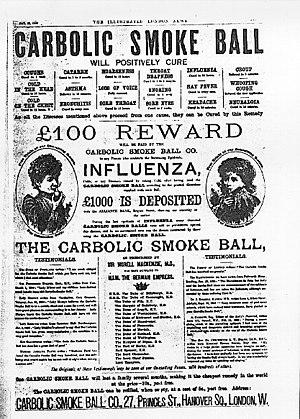- RT @Dave_Champion Obama asks DOJ to look at whether AZ immigration law is constitutional. Odd that he never did that with #Healthcare #tcot #
- RT @wilw: You know, kids, when I was your age, the internet was 80 columns wide and built entirely out of text. #
- RT @BudgetsAreSexy: RT @FinanciallyPoor "The real measure of your wealth is how much you'd be worth if you lost all your money." ~ Unknown #
- Official review of the double-down: Unimpressive. Not enough bacon and soggy breading on the chicken. #
- @FARNOOSH Try Ubertwitter. I haven't found a reason to complain. in reply to FARNOOSH #
- Personal inbox zero! #
- Work email inbox zero! #
- StepUp3D: Lame dancing flick using VomitCam instead or choreography. #
- I approve of the Nightmare remake. #Krueger #
What is a Mechanic’s Lien?

- Image via Wikipedia
When you hire someone to work on your property or provide material to build or improve it, they are entitled to get paid. A mechanic’s lien is the method of enforcing that payment.
Here is what you need to know about mechanic’s liens.
A contractor must usually give you written notice of intent to file a lien if the contract isn’t paid. He needs to do this within a short time of beginning the work. The notice will include text to the effect that subcontractors also have the right to file a lien if they are not paid. This notice gives you two methods of defense: You can pay the subcontractors directly and withhold that amount from the payment to the contractor, or you can withhold the final payment until you have received a lien waiver from each of the subcontractors.
If the notice isn’t given correctly, the contractor forfeits his right to file a lien. Also, in most places, if a contractor is supposed to be licensed to do the work, but isn’t, he’s not able to file a lien.
Subcontractors must also provide notice on intent within about 45 days–depending on the state–of the time they first provide services or material, or the lien is not enforceable.
Protecting Yourself
First, you only have to pay once. If you pay the contractor in full before getting the notice of intent from the subcontractors, you can’t be forced to pay again.
Next, make the contractor provide a list of all subcontractors and keep track of any notices of intent you get. Get lien waivers from everyone involved before you make the final payment to the contractor.
Finally, you have the rights defined in the notice of intent to file a lien. You can either pay the subcontractors directly, or you can withhold the final payment until you receive lien waivers from each subcontractor.
Resolution
The lien holder has 120 days to file the lien and 1 year to enforce it. Enforcing simply means that it a suit has been filed. Once that happens, you can either pay the contractor, attempt to settle with the contractor, or you can take the contractor to court to determine the “adverse claims” on your property. There aren’t too many choices at this point.
Do yourself a favor and get lien waivers before you make the final payment on any work done on your property.
Whose Line Is It Anyway? Why do some shows return from the dead?

Watching TV in the summer used to mean surfing channels of reruns, but lately there seems to be a slew of “new” shows that are repeating old ones. Networks and cable channels are bringing back previously popular shows such as “Whose Line is it Anyway?”, “Hawaii Five-O”, and “Dynasty”. While some people are thrilled that their favorite shows are back, a lot more of us are wondering why we need to keep rehashing the past.
These factors mean that TV stations are not very willing to take risks with new shows. A new drama or science fiction show can take millions of dollars to produce, and in some cases it will be pulled within a few episodes if it fails to catch on. When reviving an old show, a network has some guarantee that it will be popular. While not every remake catches on (Charlie’s Angels anyone?), a remake will usually attract enough interest to make the first episode a success.
The costs to produce these shows are also much lower than “new” shows. In many cases, networks already own the property rights to the show as well as contracts with many of the former actors, directors, and producers. In several cases, they also have access to props, costumes, and set pieces. Because of this, they can produce a pilot for a much lower costs than a “new” show.
Finally, advertisers like the idea of bringing back a show. While a network usually has to struggle to find sponsors for shows that don’t have a full season of Nielsen data to show, they can easily sell a show that advertisers are already familiar with. Furthermore, advertisers like that they know what to expect. Without seeing a single episode, an advertiser can accurately guess at the demographic that will be attracted to the show just by looking at the data from the original show. Because advertisers are familiar with the plot of these shows, they are also more willing to negotiate for product placement within the show itself. In some cases, advertisers have even suggested how their product could be incorporated into an episode before the first script is even finalized.
Related articles
The Magic Toilet

- Image by tokyofortwo via Flickr
My toilet is saving me $1200.
For a long time, my toilet ran. It was a nearly steady stream of money slipping down the drain. I knew that replacing the flapper was a quick job, but it was easy to ignore. If I wasn’t in the bathroom, I couldn’t hear it. If I was in the bathroom, I was otherwise occupied.
When I finally got sick of it, I started researching how to fix a running toilet because I had never done it before. I found the HydroRight Dual-Flush Converter. It’s the magical push-button, two-stage flusher. Yes, science fiction has taken over my bathroom. Or at least my toilet.
I bought the dual-flush converter, which replaces the flusher and the flapper. It has two buttons, which each use different amounts of water, depending on what you need it to do. I’m sure there’s a poop joke in there somewhere, but I’m pretending to have too much class to make it.
I also bought the matching fill valve. This lets you set how much water is allowed into the tank much better than just putting a brick in the tank. It’s a much faster fill and has a pressure nozzle that lies on the bottom of the tank. Every time you flush, it cleans the inside of the tank. Before I put it in, it had been at least 5 years since I had opened the tank. It was black. Two weeks later, it was white again. I wouldn’t want to eat off of it, or drink the water, but it was a definite improvement.
Installation would have been easier if the calcium buildup hadn’t welded the flush handle to the tank. That’s what reciprocating saws are for, though. That, and scaring my wife with the idea of replacing the toilet. Once the handle was off, it took 15 minutes to install.
“Wow”, you say? “Where’s the $1200”, you say? We’ve had this setup, which cost $35.42, since June 8th, 2010. It’s now September. That’s summer. We’ve watered both the lawn and the garden and our quarterly water bill has gone down $30, almost paying for the poo-gadget already. $30 X 4 = $120 per year, or $1200 over 10 years.
Yes, it will take a decade, but my toilet is saving me $1200.
Ditch Cable and Still Enjoy TV

- Image via Wikipedia
Cable is expensive. If you have more than just basic cable, you are probably paying at least $65 per month or more, just for TV. How can you save on television, without stealing cable?
The good news is that, in the internet age, it is possible to fully enjoy TV without having to pay exorbitant fees to the cable company.
Basic Cable
Basic cable generally runs about $15 per month, but it usually comes with a $10 per month discount on internet access if you use cable for that. For $5 per month, you can get all of the local broadcast channels, including the news and weather, which we use in the morning while getting ready for work.
Netflix
We watch movies. We watch lots of movies. Spending $14 per month for an unlimited 2-at-a-time plan is a no-brainer for us. It has also enabled us to scratch the movie itch without resorting to HBO or incessant movie purchases, which used to run $100+ each month. When you include Netflix instant in the equation, which gives us a ton of older movies to choose from at a moment’s notice, we are more than covered for our movie obsession.
Hulu
Hulu.com has a metric crapload of TV shows and movies available for free. They are moving towards a partial pay model, but most of their content will still be free. But, you don’t want to crowd your family around a 15-inch laptop screen to watch something, you say? Fine. We went to our local computer parts store and bought cables and converters to go from the video-out and headphone jacks on the laptop to the inputs on our VCR. That cost about $30 for 2 extension cords and 2 converters. We use the analog outputs, which allows for cheaper converters. The quality after conversion is no worse than watching a movie in the VCR.
TiVo
TiVo comes with a Video-On-Demand(VOD) section, if you connect it to the internet. It’s mostly free, with hundreds of channels to choose from, ranging from trailers to full shows and movies. I have a season pass to TEDTalks, which are always impressive and usually inspirational. There are many more channels to choose from.
Torrent
I’m kidding. I’m not advocate piracy. This is just search-engine bait.
As you can see, it’s entirely possible to save money on cable, without missing out on anything you care about. How do you save money on TV and movies?
My Credit Cards
This announcement is a bit premature, but not everything that’s premature has to end in an evening of disappointment.
At the beginning of the year, I transferred the balance of my last credit card onto two different cards, each with a 0% interest rate. One card got a $4,000 transfer and the other got $13,850. The approximately $415 in fees I paid for the transfer saved me nearly $1500 in interest this year.
The card that got the big balance is the card we use for a lot of our daily spending. On my statement dated 2/18/2012, the balance on the this card was $14,865.23. At the same time, the smaller card had a balance of $3,925.09, for a total of $18,790.32. When I started my debt-murder journey in April 2009, it had peaked at just under $30,000.
When my payments clear later today, that balance will be gone.
That is nearly $19,000 paid down in 8 months.
Now, the inheritance we picked up did accelerate our repayment a bit, but only by a few months.
Starting from $90,394.70 in April 2009, we have paid down $63,746.70, leaving $26,648.00 on our mortgage.
I’m more than a little excited, which–as usual–is the cause for the prematurity.
New goal: pay off the mortgage in 2013.




